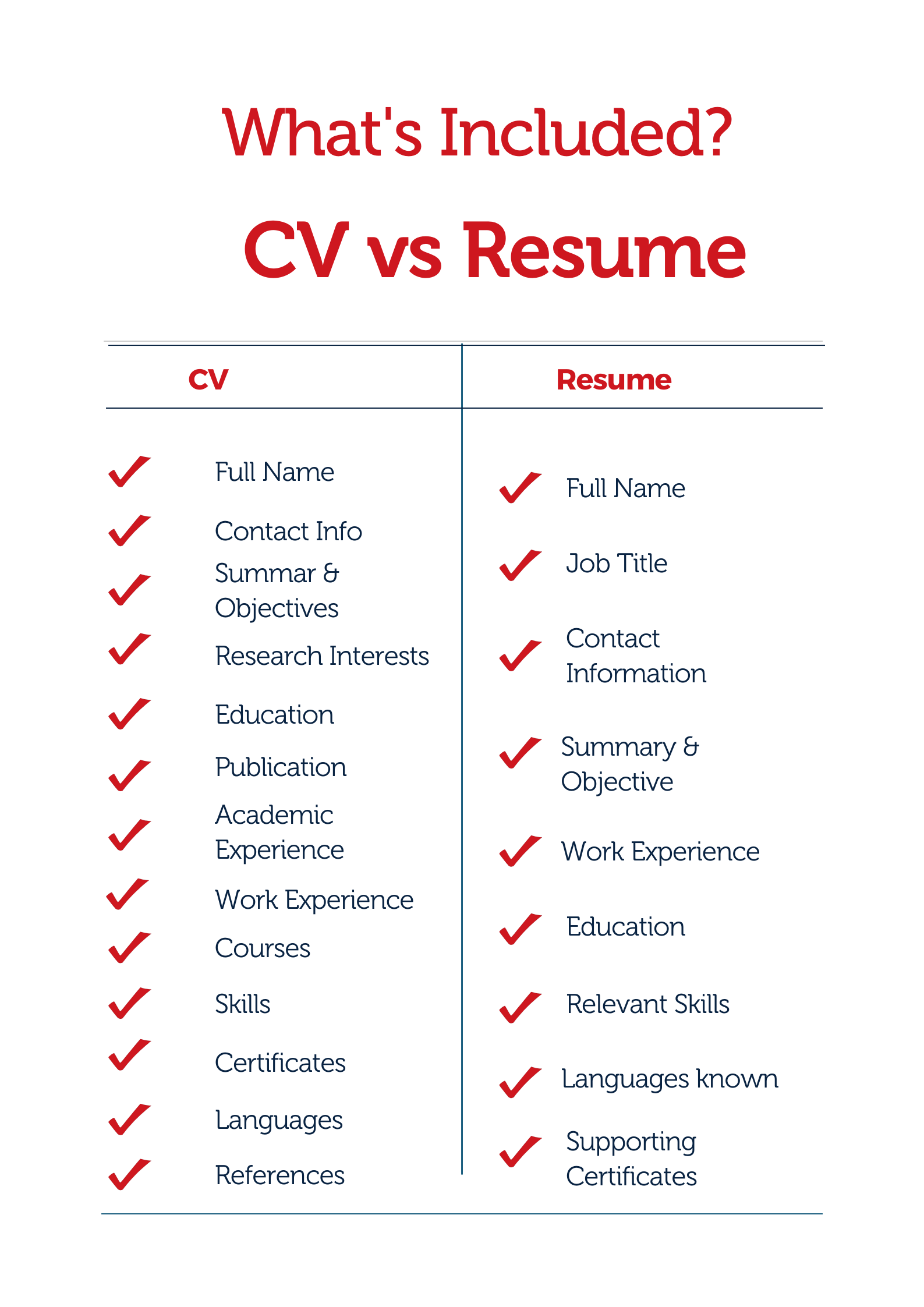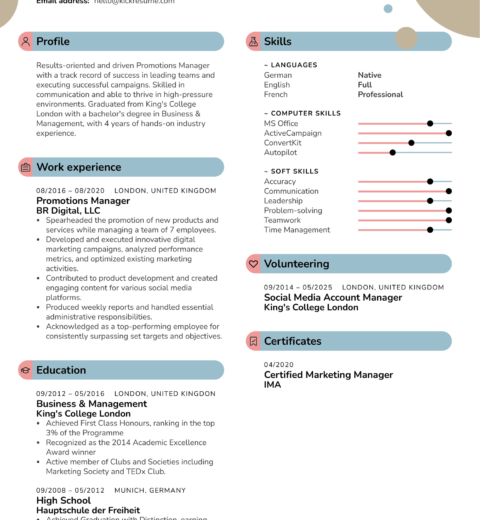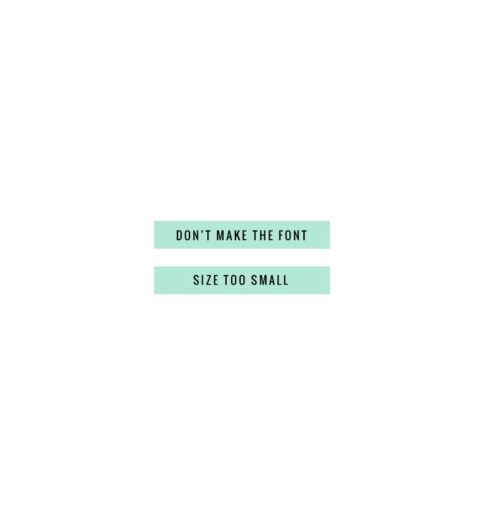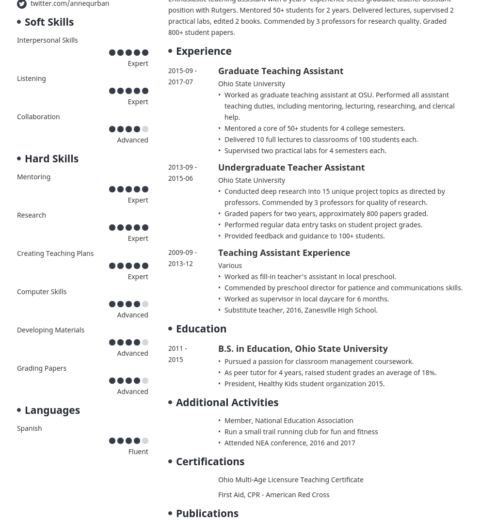In the vast landscape of job applications, where the right impression can open doors, the choice between a Curriculum Vitae (CV) and a resume often perplexes job seekers. Understanding the key differences between these two documents is akin to differentiating between a detailed map and a quick GPS snapshot; both can guide you on your journey, but each serves its purpose with distinct nuances.
The primary distinction lies in the length and depth of content. A resume is typically a concise summary, usually limited to one or two pages, tailored for specific positions. It emphasizes the most relevant skills, experiences, and accomplishments that directly correlate with the job at hand. On the other hand, a CV is a comprehensive document that chronicles the entirety of one’s academic and professional history in extensive detail. This may span multiple pages, much like a rich narrative that weaves together various chapters of a person’s journey through education, research, and professional endeavors.
When it comes to structure, resumes and CVs showcase differing frameworks, reflecting their unique purposes. Resumes often employ a more streamlined, bullet-point format, enabling hiring managers to quickly discern qualifications at a glance. The sections typically include a professional summary, skills, work experience, and education. In contrast, a CV exhibits a more traditional format, categorized into distinct sections that may include publications, presentations, research experience, teaching experience, fellowships, and more. This structured approach mirrors an academic thesis, revealing the depth and breadth of an individual’s credentials.
The target audience for these documents further clarifies their differences. Resumes are predominantly utilized in the corporate and private sector, where employers seek candidates with specific skills and direct relevance to the position. The goal is to sell oneself succinctly. Conversely, CVs are primarily used in academic, medical, or research-oriented fields, where a detailed history of accomplishments is necessary to assess a candidate’s qualifications fully. In this setting, a CV serves as a narrative tapestry, illustrating not just the what but the how and why behind a person’s professional path.
Another significant aspect to consider is geographic conventions. In the United States and Canada, the terms ‘resume’ and ‘CV’ are used distinctly. Here, a resume is the standard for job applications, while a CV is reserved for academic contexts. However, internationally, particularly in Europe, the terms can often be interchanged, leading to confusion. It’s crucial for job seekers to understand the specific expectations of the geographic region in which they are applying. Not knowing can be detrimental, akin to showing up to a costume party dressed in formal wear.
In terms of content, the profound nature of a CV allows for a level of personalization that a resume rarely achieves. Job seekers crafting a CV can delve into their teaching philosophies, detailed project descriptions, and research outcomes. They can articulate their academic narratives, presenting a robust picture that reinforces their professional identity. In contrast, a resume prioritizes brevity and relevance, often stripping away personal anecdotes and reflections in favor of hard-hitting facts and figures. While a resume is a snapshot, a CV is a full portrait, capturing the intricacies and layers of a professional life.
One compelling metaphor to explore in this discourse is that of a garden. A resume represents a neatly manicured garden, thriving with carefully selected plants that bloom for a specific season, showcasing the most attractive features designed to catch the eye of a visitor. It’s meticulously curated, with each flower representing a skill or an experience tailored to captivate potential employers. In contrast, a CV resembles a diverse botanical garden, overflowing with a myriad of species—each representing varying experiences, accomplishments, and interests over time. The frost of time has shaped this garden, revealing growth and evolution in a multitude of forms that may not all be pertinent at a glance but collectively tell a story of resilience, adaptability, and depth.
When contemplating the presentation of either document, one must not overlook the significance of aesthetics. A resume, with its crisp designs and striking formatting, is often visually structured for immediate impact. The use of fonts, colors, and spacing can be artfully curated to enhance readability and appeal. A CV, while it can also be designed with care, typically leans more towards a professional presentation, prioritizing clarity over flamboyance. The essence here lies in communicating the story clearly; after all, the message is paramount.
Ultimately, the choice between a resume and a CV is not simply a matter of preference but of situational appropriateness. It is essential for job seekers to evaluate the context of their applications carefully, ensuring that they choose the right document that resonates with their audience, whether that is a corporate recruiter seeking succinct expertise or an academic committee looking for comprehensive insight into a candidate’s qualifications.
In conclusion, the nuances between a CV and a resume highlight the importance of understanding the different facets of job application materials. Like two sides of the same coin, they serve varied purposes, each offering unique insights into a candidate’s professional journey. Whether crafting an enticing resume or a detailed CV, the art lies in highlighting one’s strengths effectively and indistinctly, painting a holistic picture that reflects not just qualifications, but passion, character, and ambition.




